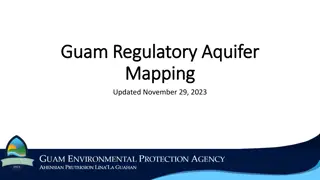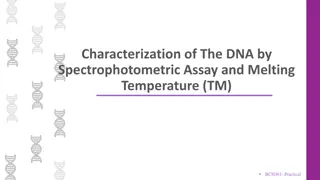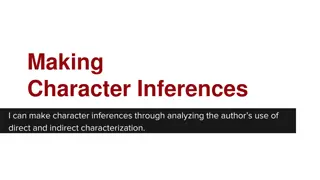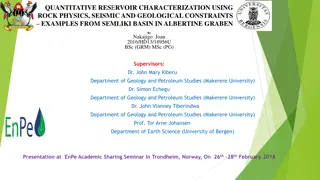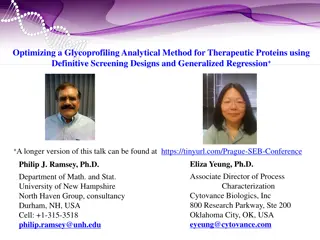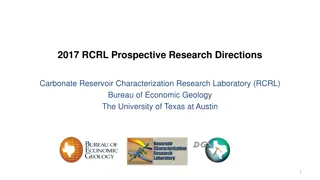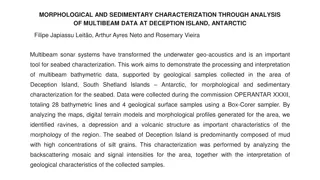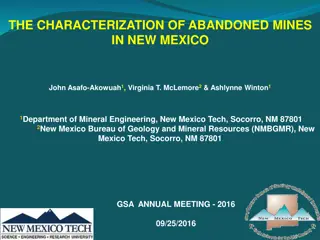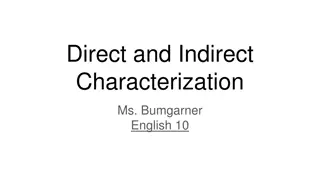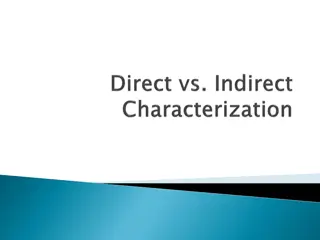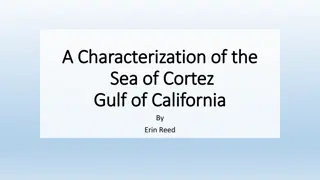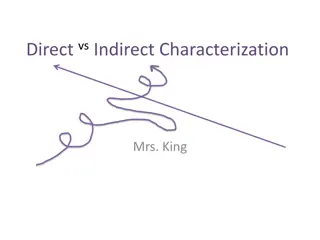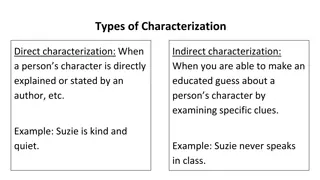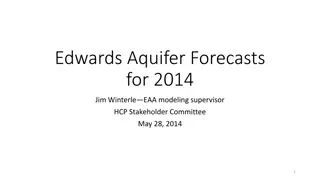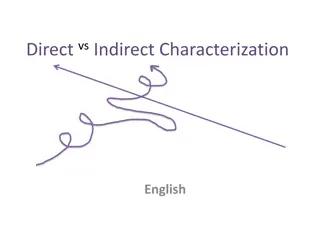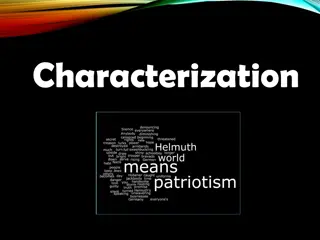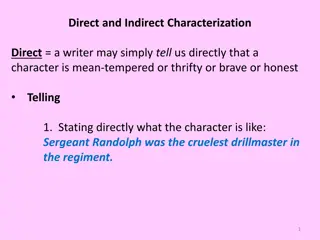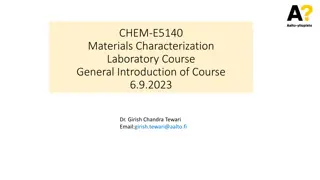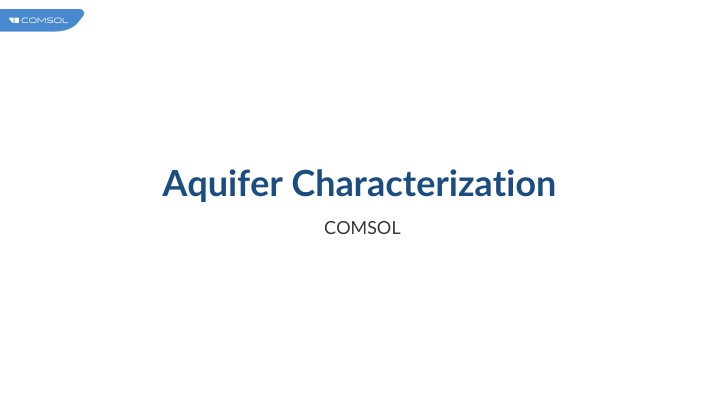
Utilizing Optimization for Inverse Modeling in Aquifer Characterization
Explore the application of Optimization interface in inverse modeling to estimate unknown parameters of aquifer characterization using COMSOL Multiphysics. Learn how to solve underdetermined optimization problems and evaluate the efficiency of the process. The model simulates the flow in an aquifer with spatially variable hydraulic conductivity, surrounded by infinite elements. Discover the equations governing fluid flow and the objective function for underdetermined inverse problems.
Download Presentation

Please find below an Image/Link to download the presentation.
The content on the website is provided AS IS for your information and personal use only. It may not be sold, licensed, or shared on other websites without obtaining consent from the author. If you encounter any issues during the download, it is possible that the publisher has removed the file from their server.
You are allowed to download the files provided on this website for personal or commercial use, subject to the condition that they are used lawfully. All files are the property of their respective owners.
The content on the website is provided AS IS for your information and personal use only. It may not be sold, licensed, or shared on other websites without obtaining consent from the author.
E N D
Presentation Transcript
Aquifer Characterization COMSOL
Introduction This is an example of how to use the Optimization interface to solve an inverse- modeling problem Inverse modeling is the practice of using (measurement) data as input to estimate the unknown parameters of the function which would describe the data A forward model using the Darcy's Law interface is set up to generate the data which is then used for the inverse modeling. The efficiency and accuracy of the inverse method as well as the optimization solver's performance can be evaluated using the forward model. Surface: Control variable logKs
Introduction The techniques used here are generally applicable for solving underdetermined optimization problems with COMSOL Multiphysics Surface: Control variable logKs
Model Description The flow in an aquifer with spacially variable hydraulic conductivity is simulated In the forward model the aquifer is surrounded by a quasi-infinite domain with constant hydraulic conductivity, which is represented by infinite elements. The flow is modeled using Darcy's Law interface The inverse problem is to estimate the hydraulic-conductivity field on a discretized quadratic grid in the aquifer using experimental (that is, forward-model) data in the form of hydraulic-head measurements from four dipole-pump tests Contour: Hydraulic head (m) Streamline: Total Darcy velocity field
Equations - Fluid Flow Darcy's Law Darcy's Law
Equations - Fluid Flow The Aquifer is surrounded by Infinite Elements
Optimization If the number of unknown parameters, n, is larger than the number of measurement values, m, the inverse problem is called underdetermined The objective function L for an underdetermined inverse problem can be written as the sum of a fitness term and a penalty term The fitness term measures how well the model fits with the observations The penalty term is relevant for problems where the number of parameters, n, exceeds the number of measurement values, m. It serves to discriminate between solutions with comparable fitness values. General Optimization
Objective Function y denotes an m-dimensional row vector of measurement values, s is an n-dimensional row vector of parameter values, h: Rn --> Rm is the forward model, which maps from parameter values to expected measurements, and R is the m-by-m covariance matrix of measurement errors. For equally distributed errors, it resembles R2I with I being the identity matrix
Penalty Term for Underdetermined Inverse Problems Q is the spatial covariance matrix, E denotes the expectation value X is an n-dimensional row vector whose elements all equal 1, and refers to the scalar constant mean of the parameter field.
Model Setup In the Figure, the eight points on the rim of the area being characterized are numbered pairwise as 1 , 2 , 3 , 4 , with plus and minus signs denoting injection wells and pumping wells, respectively. Discretization of the hydraulic-conductivity parameter field.
Model Data A text file with reference synthetically generated field data, containing the logarithmic values of the regularized hydraulic-conductivity parameter field is used to generate fictitious hydraulic-head measurements. This allows to evaluate the optimization solver s performance and accuracy, and to test and calibrate the inverse model. Different penalty terms in the objective function can be investigated and the solution s dependence on the number of used observations can be analyzed.
Results Inverse-modeling results for the hydraulic conductivity field with 6 hydraulic-head observations taken into account Hydraulic conductivity field
Results Inverse-modeling results for the hydraulic conductivity field with 24 hydraulic-head observations taken into account Hydraulic conductivity field

